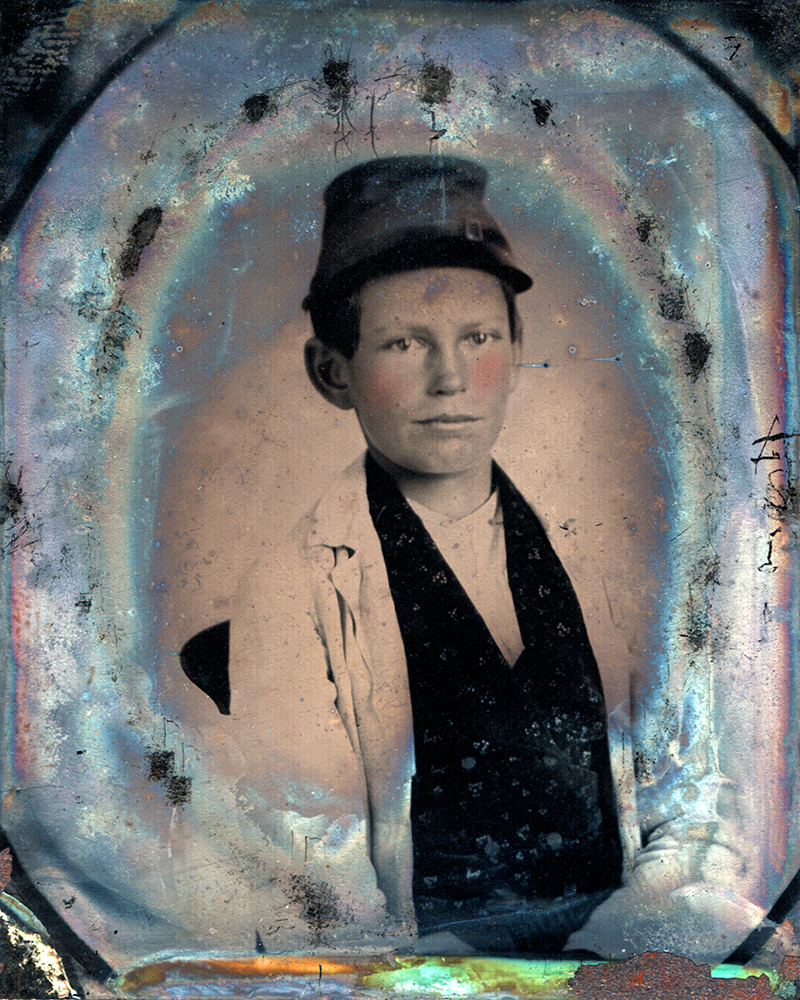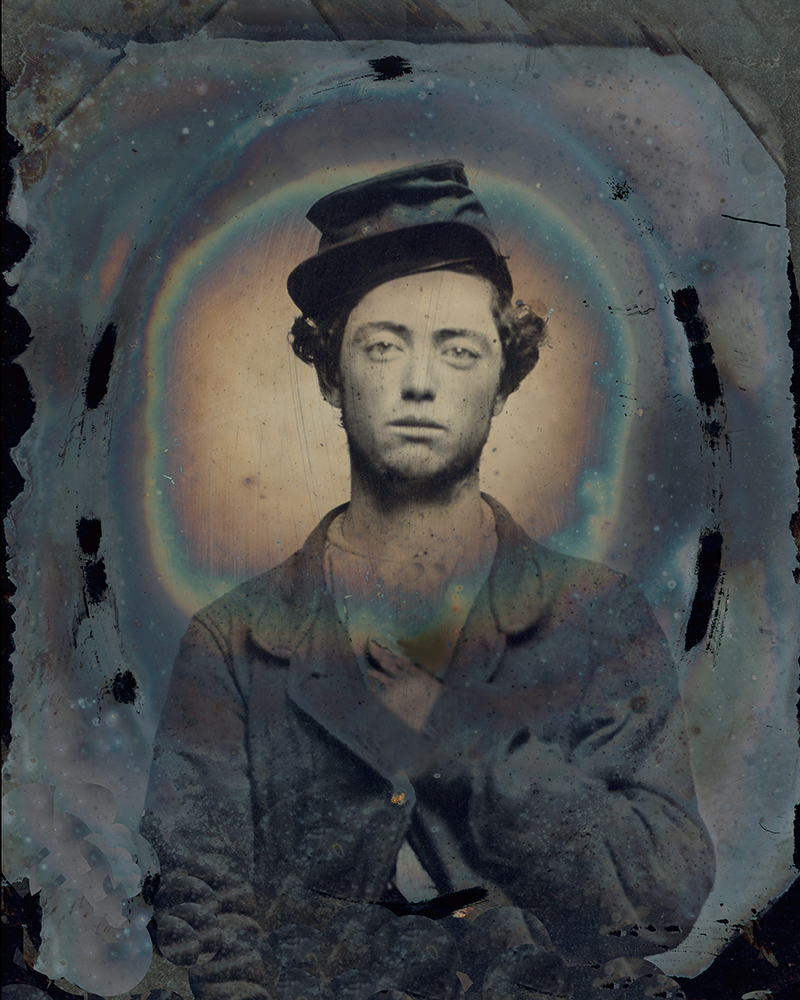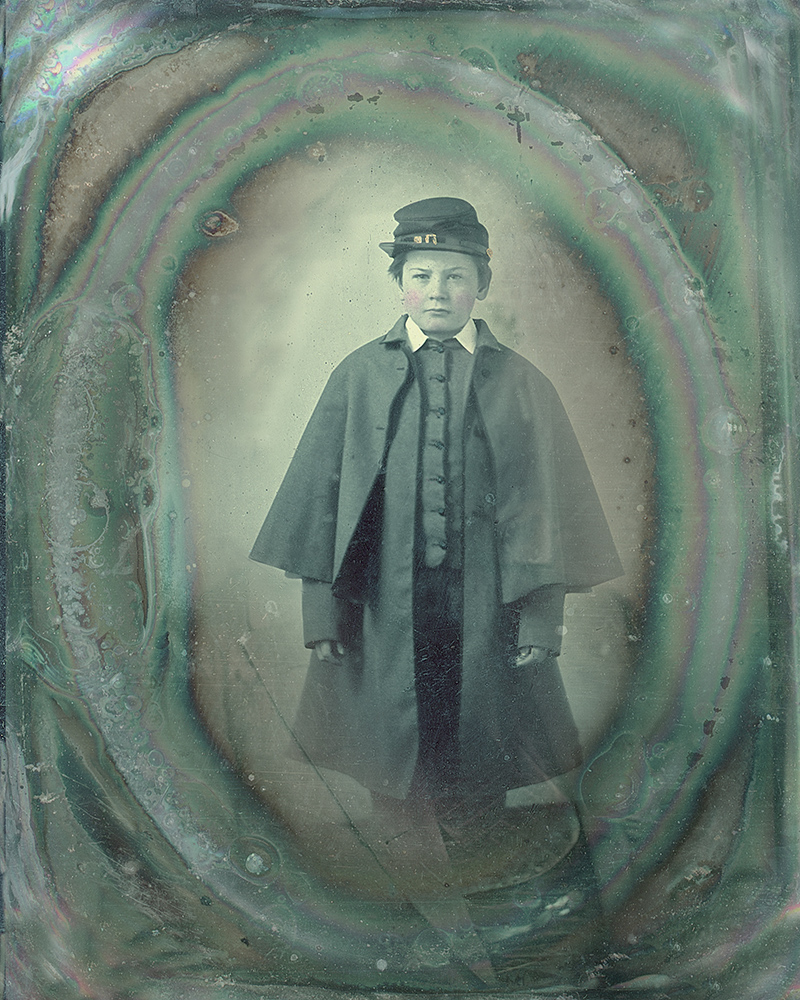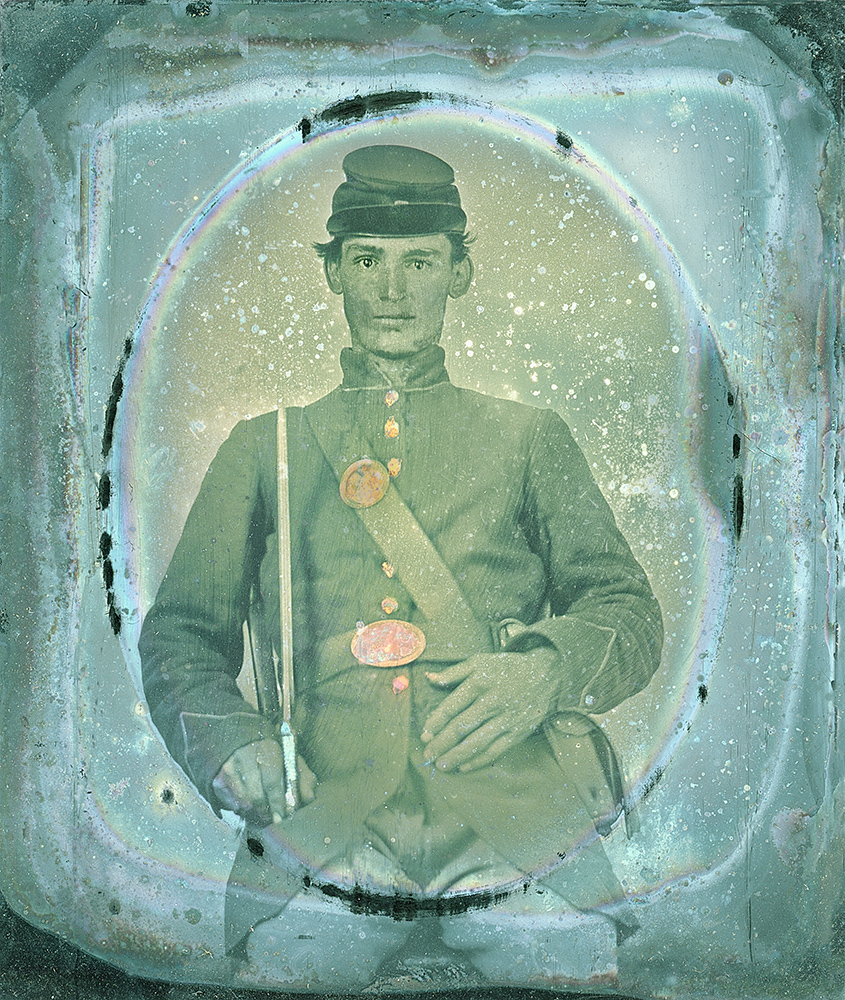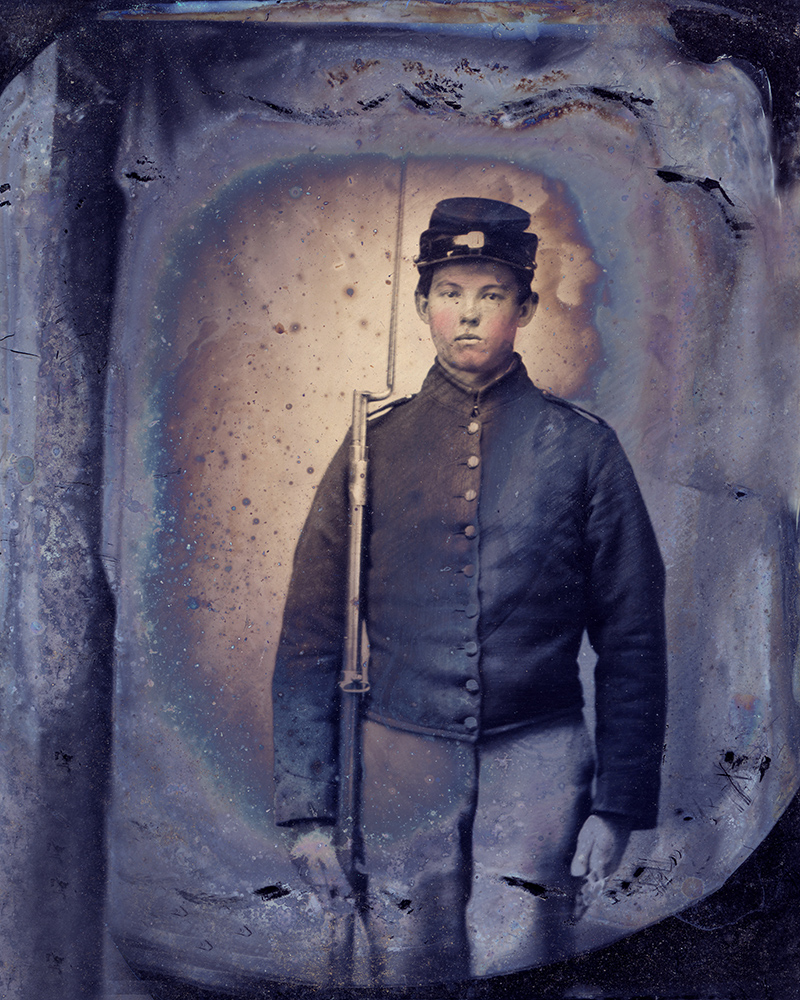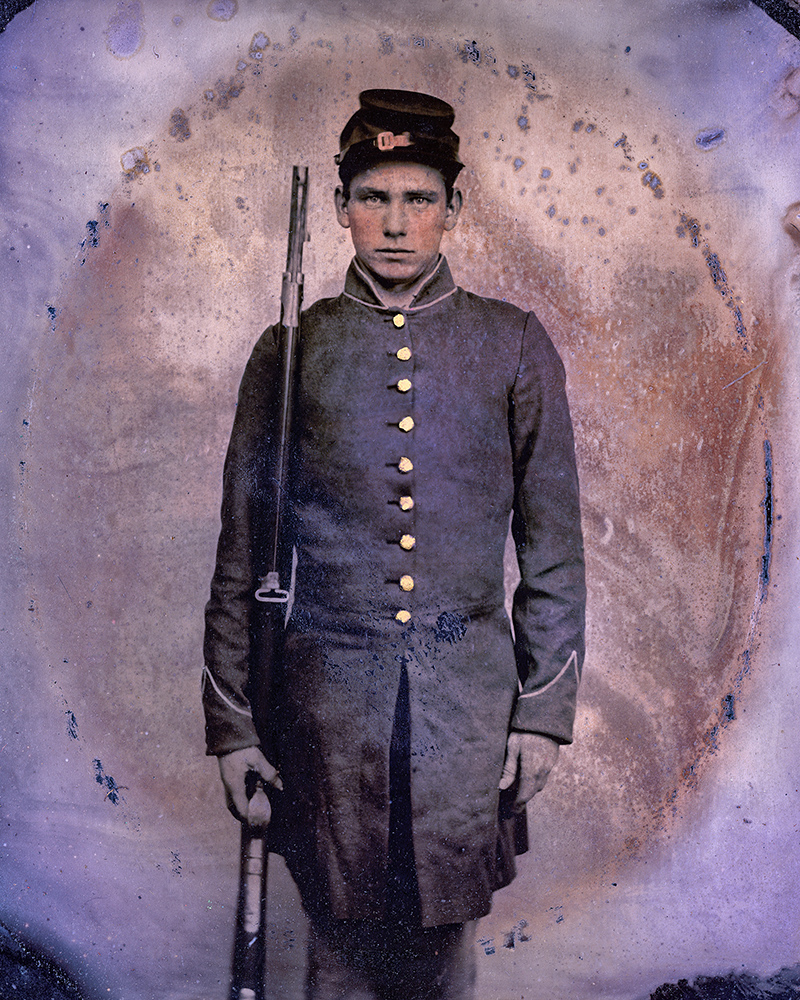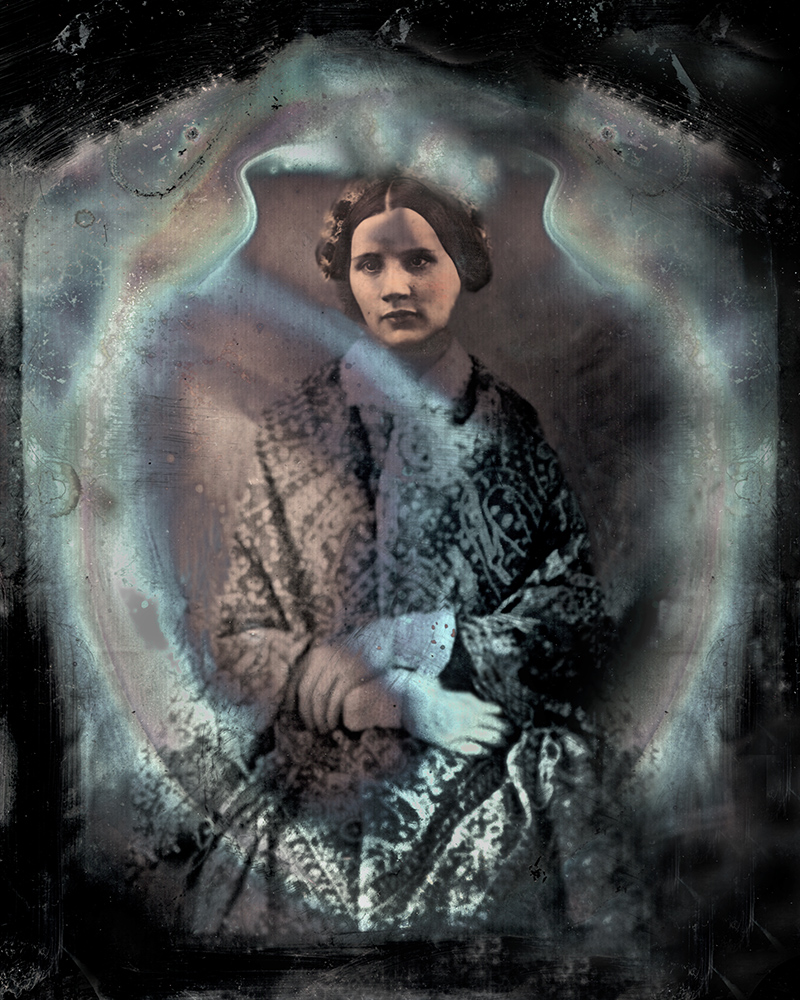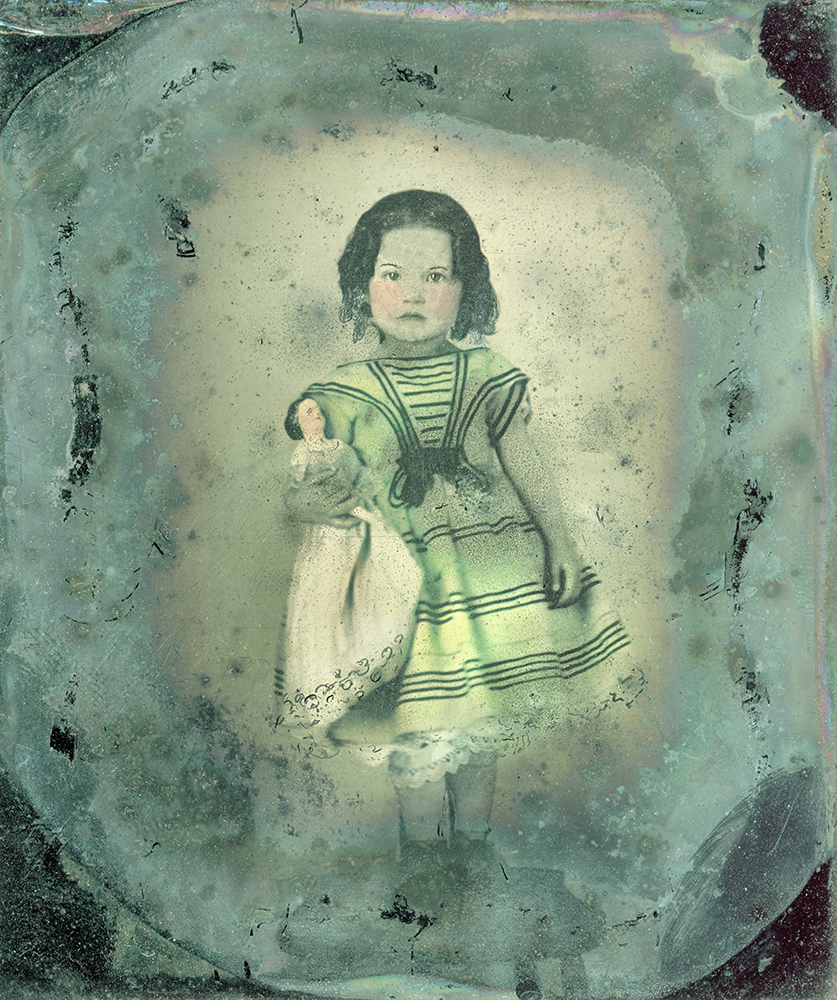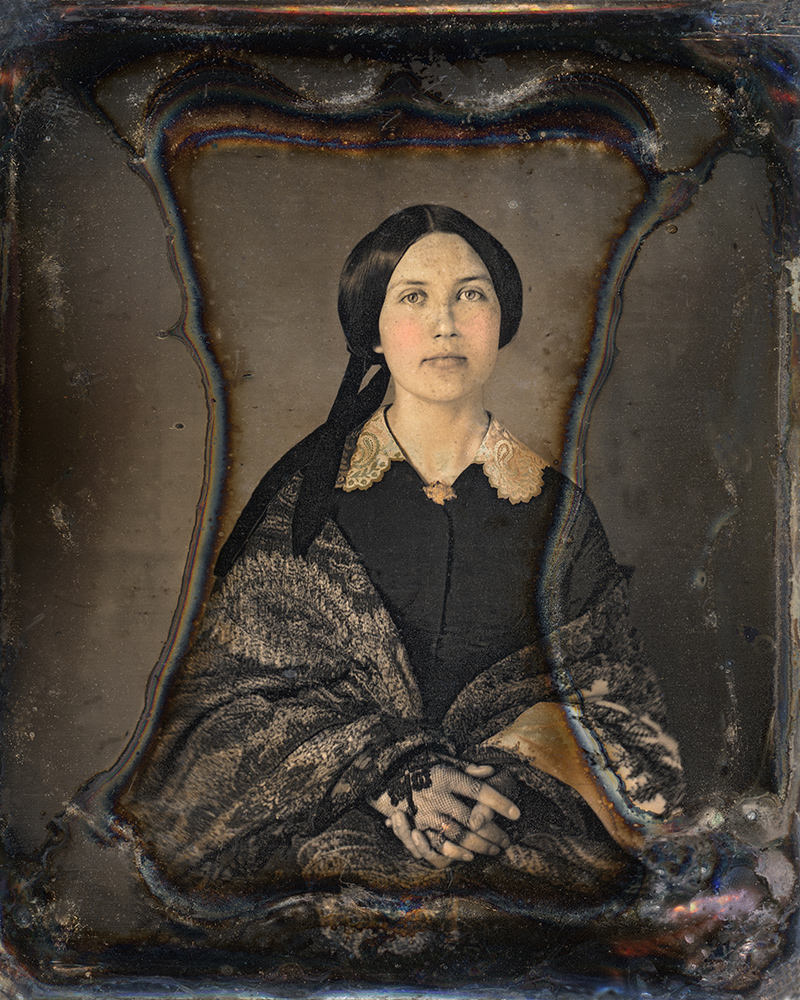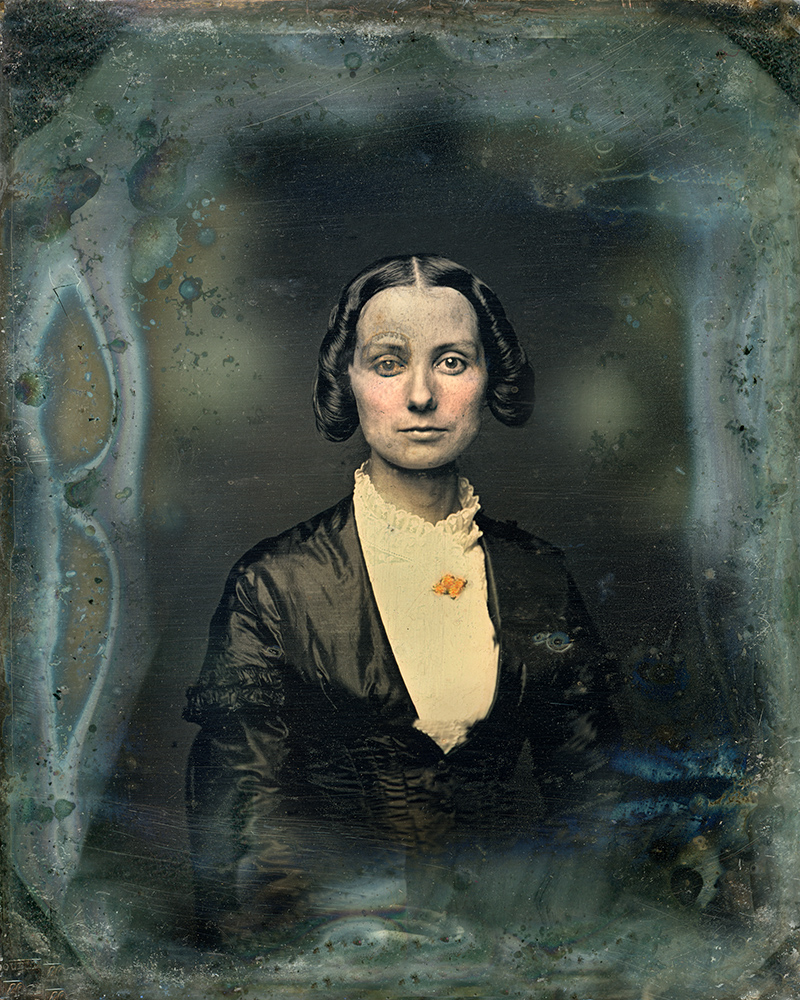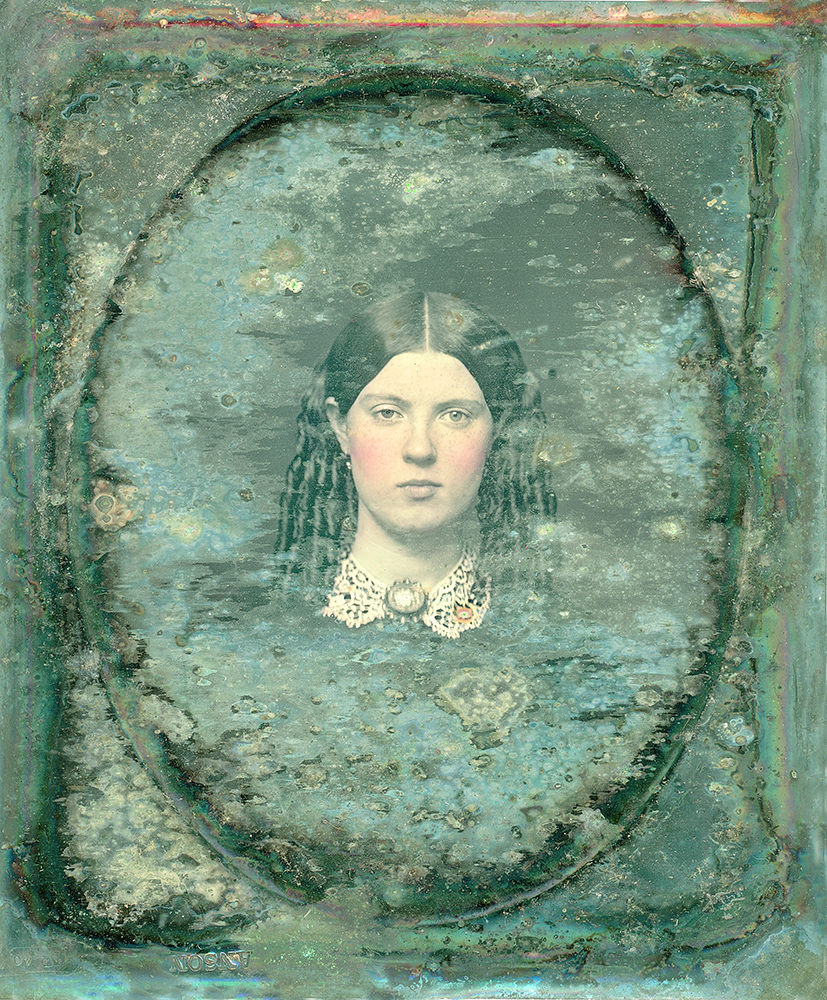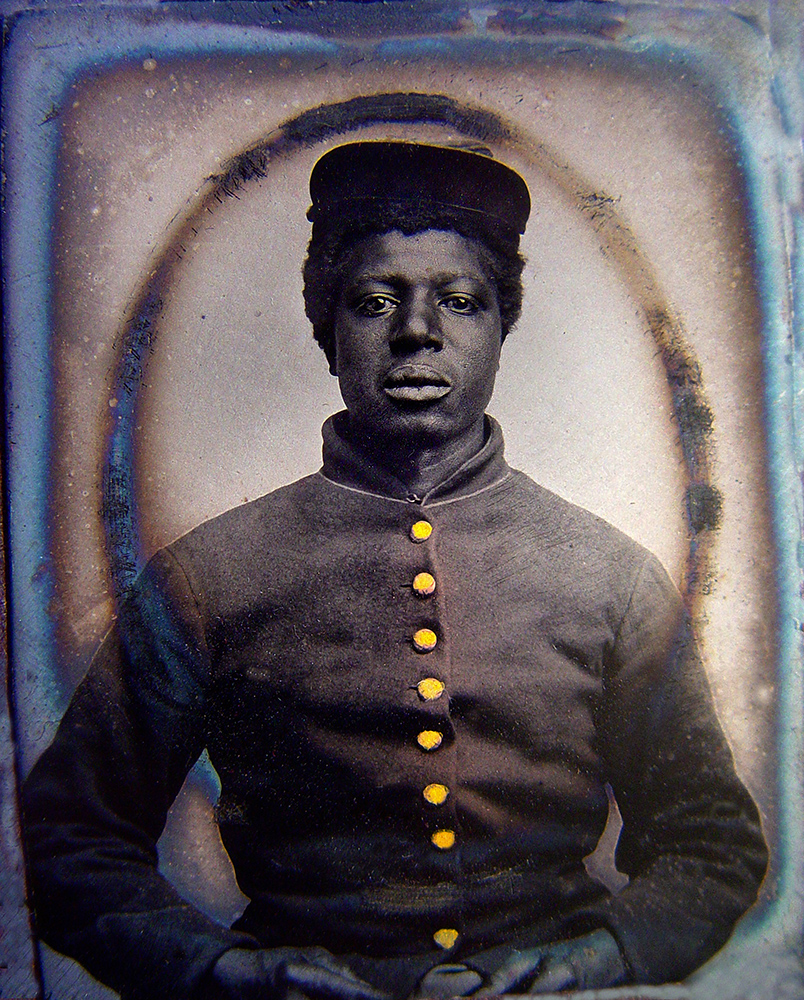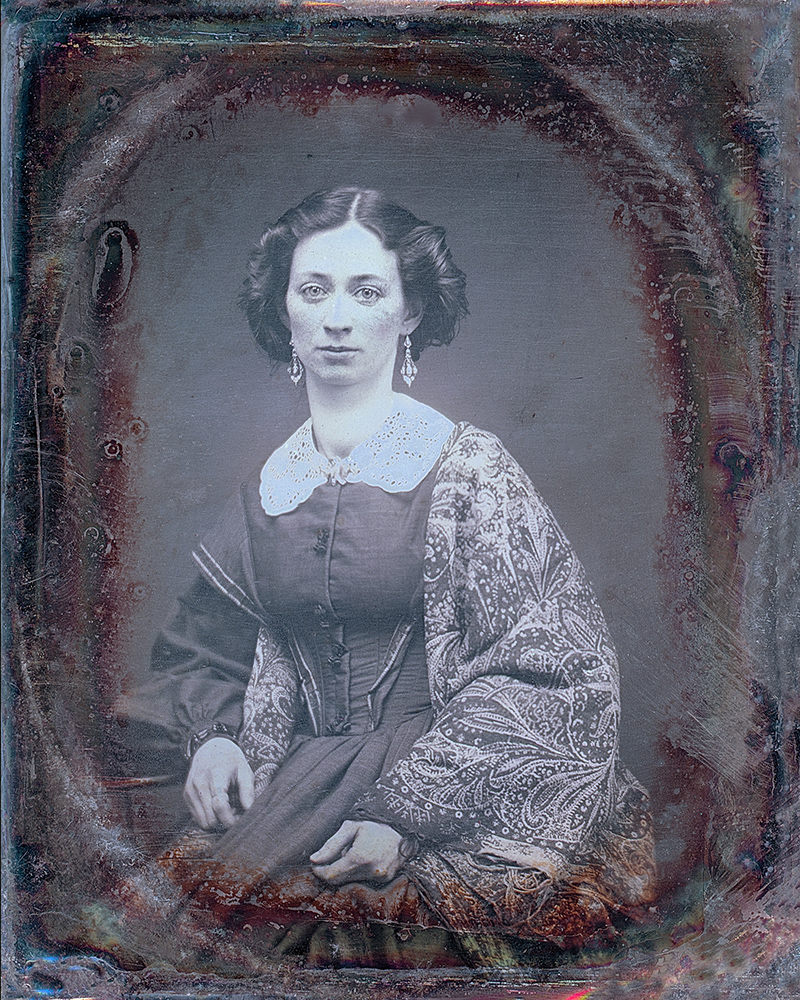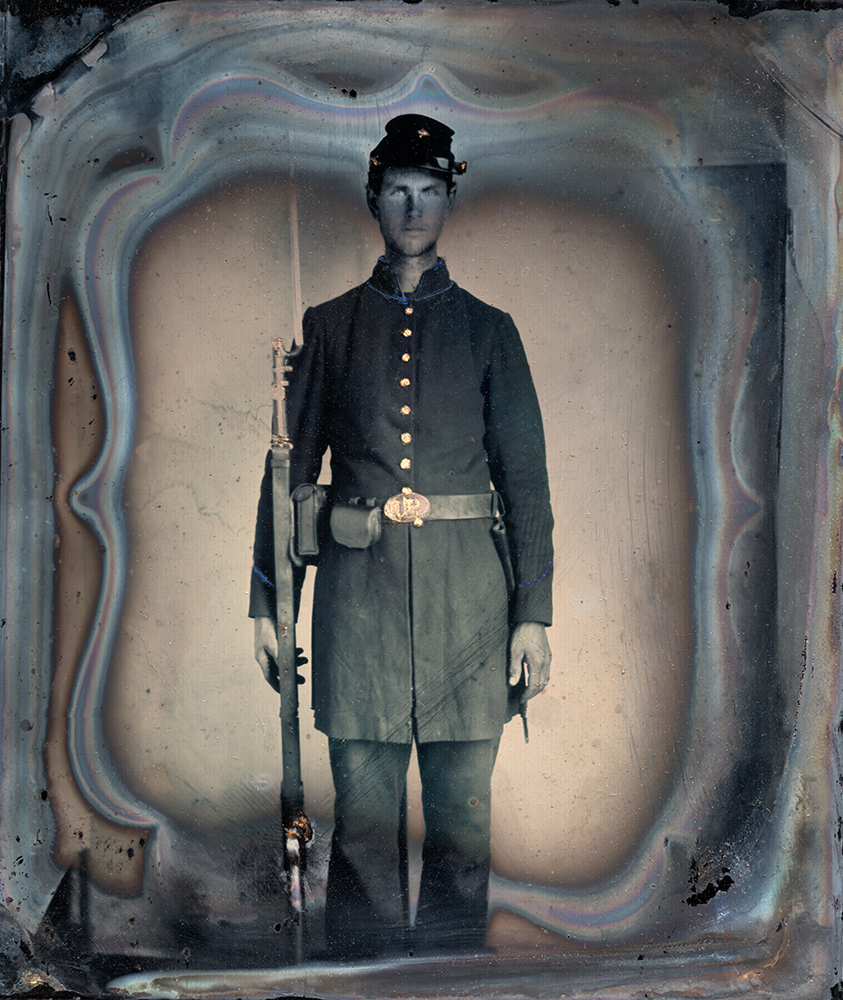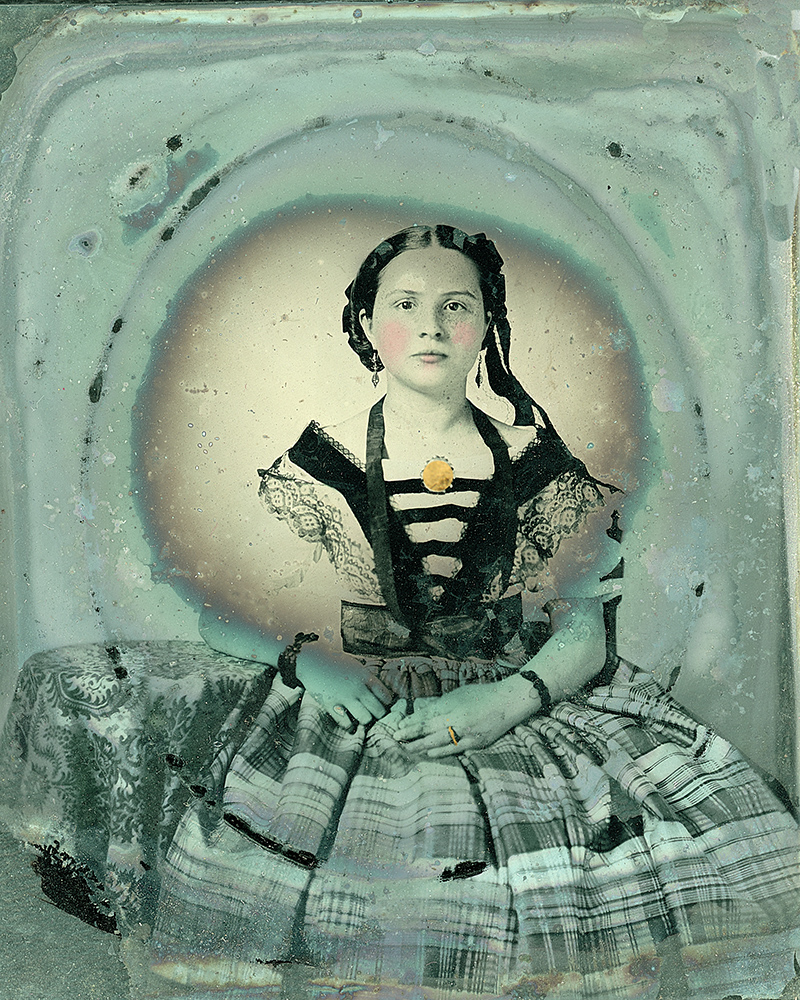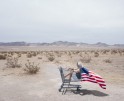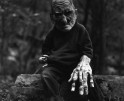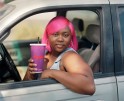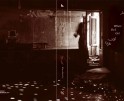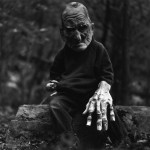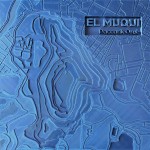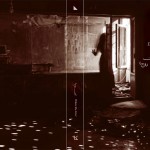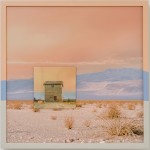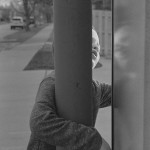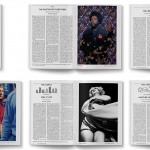Portrait Week: William Betcher: Ghosts: Civil War Portraits
These classic memorial images tell one story, but when I take the small, antique plates out of their cases, behind the mattes is a haunting “backstage” – one of vivid, oxidized decay that suggests other stories. As a psychiatrist, I am drawn to people’s backstories, otherwise known as the Unconscious, as well as how they mourn, for better and for worse. – William Betcher
Vintage photographs hold a certain ghostly magic and untold histories, and images of young solders at war have a particular sadness and poignancy. The faces in William Betcher‘s project, Ghosts: Civil War Portraits, feel surprisingly contemporary, once void of their uniforms. The work speaks to time and memory, but also is a nod to the Kirlian photography technique that supposedly measured the “auras” of a living beings. These photographs hold the energy of time and a particular gravitas from young lives possibly lost to war.
William Betcher is a fine art photographer, Photography Editor at Solstice Literary Magazine, and a psychiatrist in private practice in the Boston area.
While initially a landscape photographer, war artifacts figure prominently in several related projects that reinterpret iconic representations of war. Currently, he is at work on a series of historical ambrotypes, tintypes, and daguerreotypes – portraits that are mounted as transparencies on clear acrylic. In War Games he has photographed damaged metal toy soldiers from WW1 with a view camera and macro lens to create half plate wet collodion tintypes that are placed in vintage 19th century cases. The toys are also represented as 36”x24” dye sublimated aluminum prints. Brand of Brothers features damaged GI Joes, and They’re coming for me are war comic covers and advertisements from the 1950’s.
His photographs have been exhibited at the Griffin Museum, Catamount Arts, the Danforth Art Museum, Soho Photo Gallery, PhotoPlace Gallery, Massachusetts General Hospital, Dartmouth-Hitchcock Medical Center, Mass Audubon Habitat, the University of New England, among other places. He published a book of landscape photography, “Anthem: For a Warm Little Pond,” which was included in the Griffin Museum’s Photobook exhibition in 2016, and he is the author of four nonfiction books.
He will have a solo show of Ghosts: Civil War Portraits on exhibit at Catamount Arts in St Johnsbury, Vermont, March 21-June 2, 2023.
Ghosts: Civil War Portraits
Ghosts: Civil War Portraits is an ongoing investigation of iconic representations of war using daguerreotypes, ambrotypes, and tintypes of soldiers and women of that historical period. Consider that probably only one likeness of each of them was ever made – a special possession displayed on a mantle and held in a family’s hands. In this respect, image making was so different than in our own virtual, digital times. In my work I seek to recreate the photograph as object – its one-of-a-kind materiality, its physical presence.
For many years I have been drawn to antique portraits of boys in uniform, holding muskets, most with their “game face” on, surrounded by ornate copper mattes and gutta-percha cases. Many of these images were made at soldiers’ campsites when they did not know if they would live to return home.
While only a small number of women secretly enlisted as soldiers in the 1860’s, women broadly have also experienced war, as can be seen in their portraits, wearing mourning clothes, devastated by loss, not to mention their own early deaths from childbirth and war related malnutrition and epidemics.
These classic memorial images tell one story, but when I take the small, antique plates out of their cases, behind the mattes is a haunting “backstage” – one of vivid, oxidized decay that suggests other stories. As a psychiatrist, I am drawn to people’s backstories, otherwise known as the Unconscious, as well as how they mourn, for better and for worse.
About ten years ago, on the Washington Post website, “Faces of the Fallen,” I viewed photographic images of soldiers killed in Iraq and Afghanistan and was struck by how little had changed since 1865. I spoke with two of these boys’ families, who said their greatest fear was that their twenty-year-old sons would be forgotten. I felt moved to find ways to breathe new life into war related portraiture.
In the Ghosts series, I scan 19th century plates, work with them digitally, then print them on a 24”x30”, transparent medium which is mounted on acrylic. When light from the front passes through them, a three-dimensional shadow or “ghost” is projected on the wall behind. I like to think that this object is reminiscent of glass ambrotypes and that it evokes what may have been felt in the 1860’s when photographic portraits were so new as to be curiosities – perhaps a sense of the uncanny, of magic, when so many young deaths led the grieving to seek loved ones through séances and spirit photographs.
I have four other related series based on war artifacts that illustrate trauma, grieving, and how boys prepare for war. These include War Games – 24”x36” dye sublimated aluminum portraits of damaged, as-found, WW1 metal toy soldiers, and half-plate tintypes that I have created of these same toys and placed in vintage memorial cases. My series of as-found G.I. Joes, broken in rough play, is titled Brand of Brothers. Inherent in these images are both the boys who played with and damaged these toys and the men that they later became.
The fourth series, War Comics, are enlarged WWII and Korean War comic book covers, juxtaposed with the ads inside that speak to adolescent fantasies and fears. – William Betcher
Posts on Lenscratch may not be reproduced without the permission of the Lenscratch staff and the photographer.
Recommended
-
Martin Stranka: All My StrangersDecember 14th, 2025
-
The Family Album of Ralph Eugene Meatyard at the High MuseumDecember 10th, 2025
-
Paccarik Orue: El MuquiDecember 9th, 2025
-
Richard Renaldi: Billions ServedDecember 6th, 2025
-
The Art of Documentary Photography: Rania MatarOctober 25th, 2025

